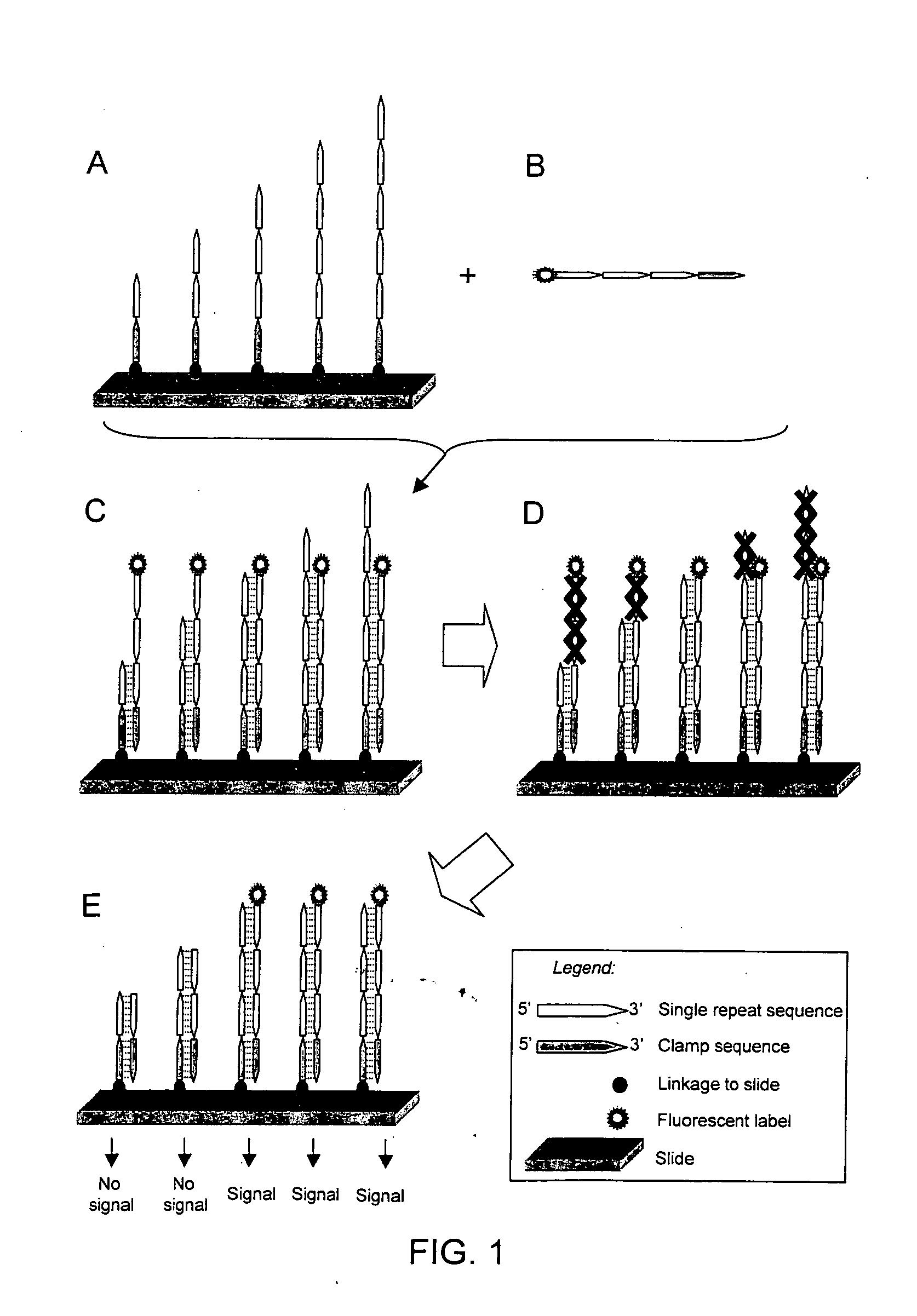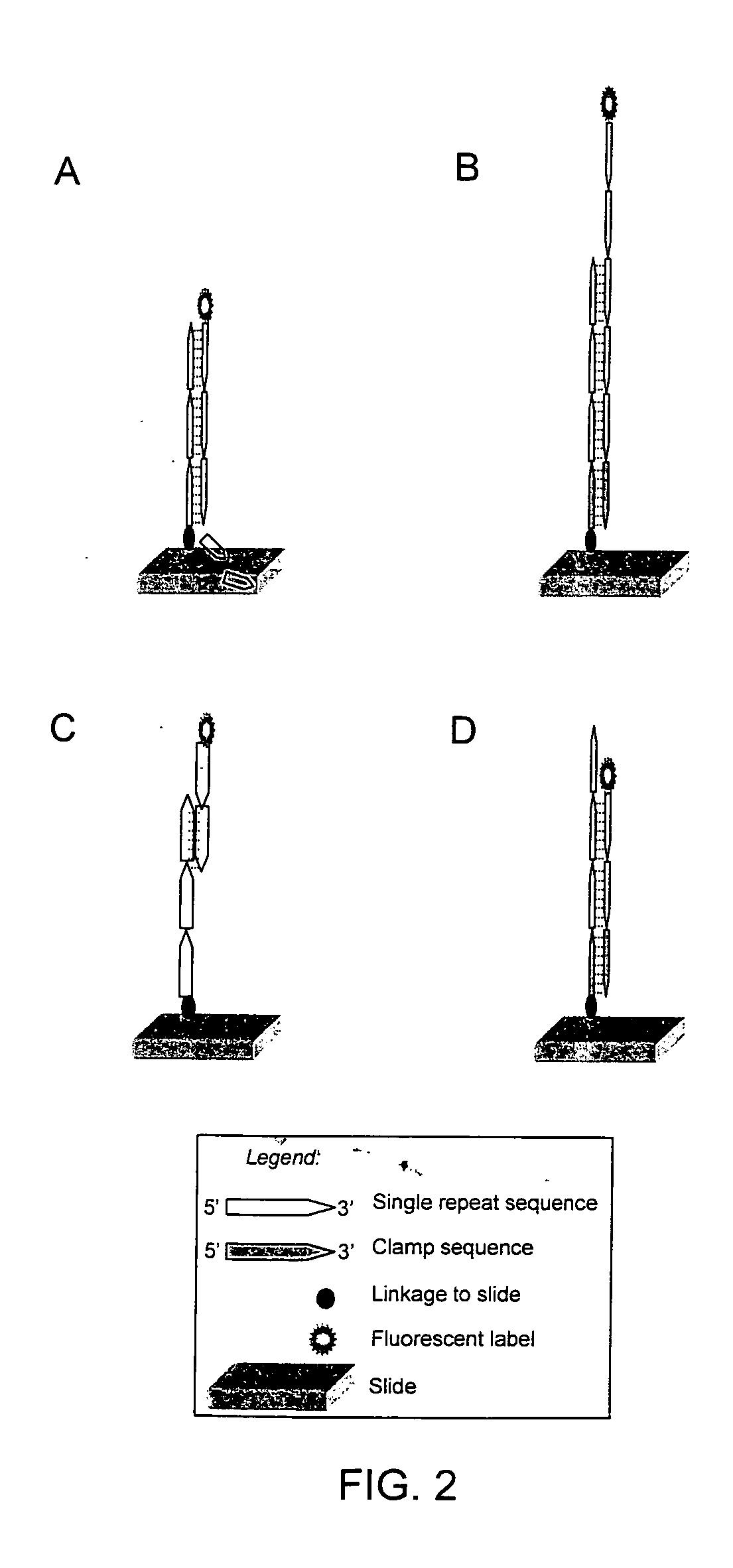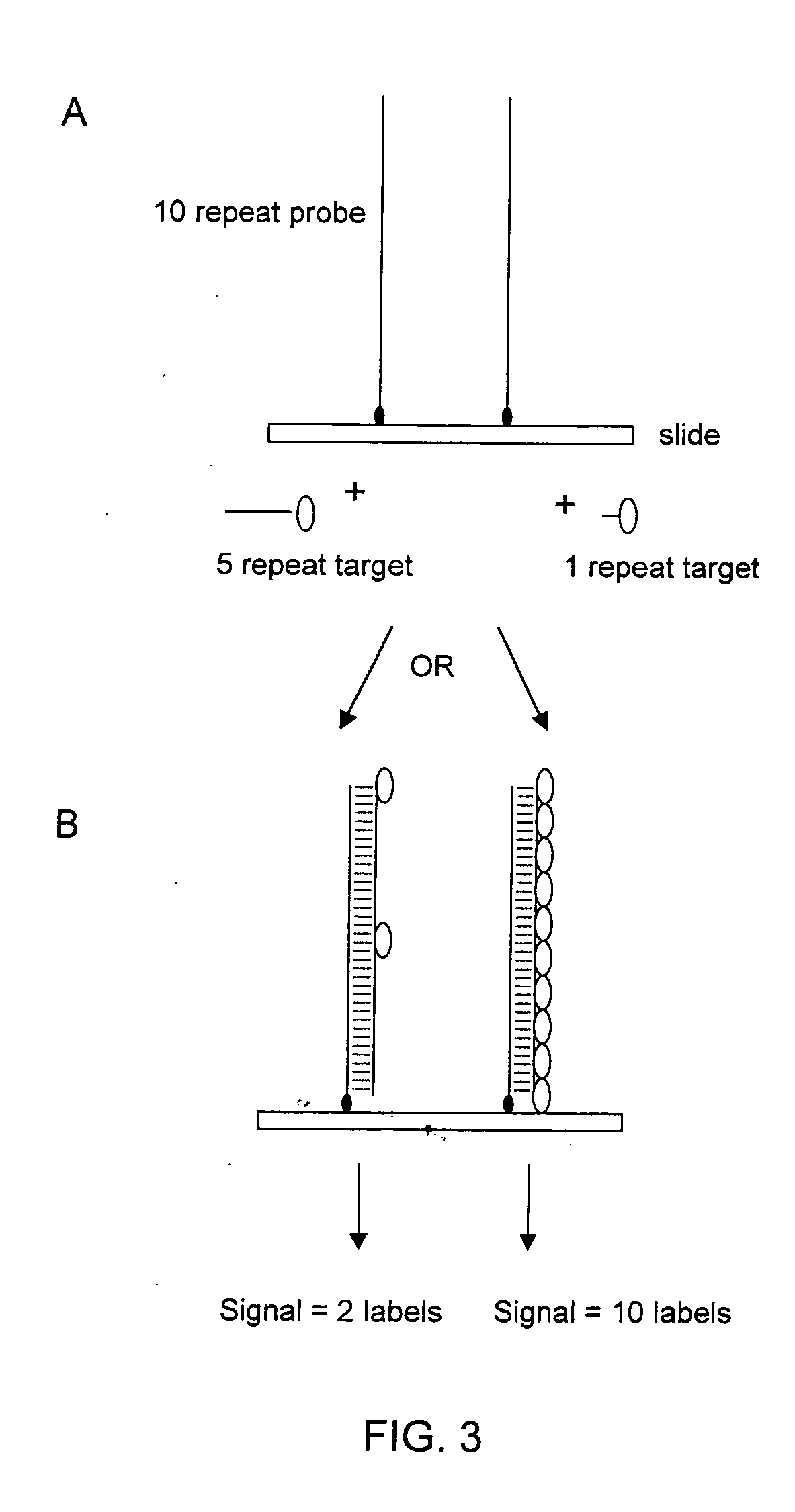DNA profiling and SNP detection utilizing microarrays
a microarray and dna technology, applied in the field of dna profiling, can solve the problems of difficult detection, subtle difference in hybridization efficiency of tandem repeats that are similar in length, and difficult detection, so as to improve the sensitivity and accuracy of str analysis.
- Summary
- Abstract
- Description
- Claims
- Application Information
AI Technical Summary
Benefits of technology
Problems solved by technology
Method used
Image
Examples
Embodiment Construction
[0041] Microarray a series of known DNA sequences attached in a regular pattern on a flat surface, such as a glass slide, and to which DNA molecules of unknown composition / sequence are hybridized for identification.
STRshort tandem repeat. A short sequence of DNA that is foundrepeated sequentially at various loci in the human genome.SNPsingle nucleotide polymorphism. Any individual nucleotidewhich varies between individual humans.Targeta DNA molecule of unknown sequence that is labeled andexposed to a microarray to allow hybridization to the probe.Probea known DNA that is attached to a microarray and subsequentlyhybridized to the target.Featurean individual spot on a microarray. A feature represents oneunique DNA sequence, although each feature contains multiplecopies of that sequence. These features currently range indiameter from 20 to 100 microns. Feature size is anticipated tobe smaller than 20 microns in future generations of microarrays.Labelalso called a “tag”....
PUM
| Property | Measurement | Unit |
|---|---|---|
| diameter | aaaaa | aaaaa |
| width | aaaaa | aaaaa |
| temperature | aaaaa | aaaaa |
Abstract
Description
Claims
Application Information
 Login to View More
Login to View More - R&D
- Intellectual Property
- Life Sciences
- Materials
- Tech Scout
- Unparalleled Data Quality
- Higher Quality Content
- 60% Fewer Hallucinations
Browse by: Latest US Patents, China's latest patents, Technical Efficacy Thesaurus, Application Domain, Technology Topic, Popular Technical Reports.
© 2025 PatSnap. All rights reserved.Legal|Privacy policy|Modern Slavery Act Transparency Statement|Sitemap|About US| Contact US: help@patsnap.com



